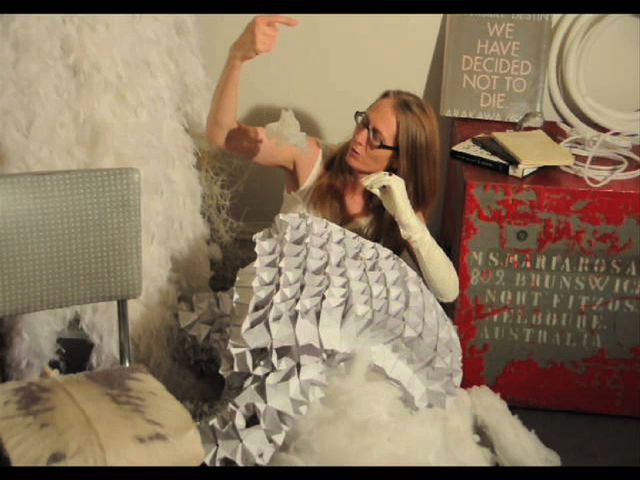This morning, my video presentation for the 3rd International Arakawa and Gins Conference was released here: http://ag3.griffith.edu.au/node/13 It works with a series of ideas that are becoming more important in the context of our broader design innovation research project, namely 'open systems', 'play', and 'emergence'. In general, Arakawa and Gins idea of 'reversible destiny' offers ways to rethink approaches to 'futuring'.
Here is the video, on Vimeo, with conference abstract below:
Open Wide, Come Inside: laughter, composure and architectural play. from pia ednie-brown on Vimeo.
This video is a presentation for an academic online conference in March 2010: the 3rd International Arakawa and Gins Architecture and Philosophy Conference. http://ag3.griffith.edu.au
It is the video presentation for the Art and Architecture stream of the conference. The video is composed as a mock episode of the children's TV show, Play School, intersecting with an academic paper.
This is the abstract for the paper:
My video presentation, which I am aiming to land somewhere between a lecture, an intimate confessional, and the pre-school TV show, Play School, is concerned with the way in which Arakawa and Gins have generated an evolving open system, and the mechanisms through which that system elusively hold together despite radical internal disparity. I suggest that this openness is sustained through simultaneously resisting coming to rest or finding explanatory closure, while maintaining a firm grasp on an elusive quality of connection. Turbulence, vitality and incongruity enter co-created loopiness, openly snowballing into a perpetual motion machine. Their buildings are an integral part of this machine, but their architecture is that machine.
But its not really a machine, it’s an organism-person-environment dynamic – a three part cleavage that plaits infinite strands of hairy connection into an open loop. What most arouses my interest, is the performative, transversal nature of their compositional glue – or in other words, what holds this dynamic together, and keeps it rolling. This I try to personify in terms of the architecture of shared laughter. The act of laughing together becomes an affective diagram and embodiment of their notion of bioscleave.
These characteristics of Arakawa and Gins make them exemplary cases of what I describe as ‘ethico-aesthetic know-how’ – or the art of emergence, which at best is a capacity to resonate in a heightened awareness of affectivity amidst all our organism-person-environment engagements. Here, we find a compositional coherence that is dynamically behavioural, something that might be found, say, in the complex of feelings that animate a face into a smile, rather than in the formal arrangement of a smiling face. And from there the question becomes, what can this teach about composing buildings that can laugh along with us?


